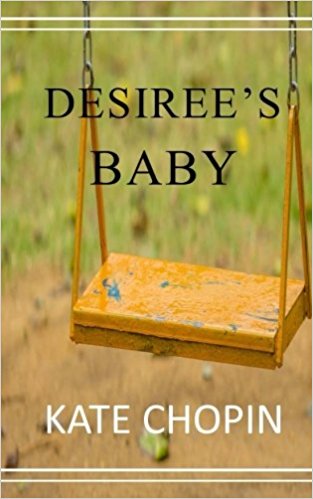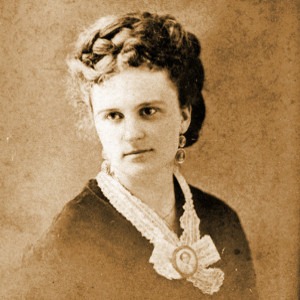Désirée’s Baby Summary
6 min read ⌚

Love is grand, isn’t it’?
It is one of the few things which transcend territories, it is the only other thing but art which speaks all languages.
And sometimes – it is also not enough.
Kate Chopin, in “Désirée’s Baby” shows when and why.
And how stupid is to believe something like that.
Who Should Read “Désirée’s Baby”? And Why?
You’d think that some things are part of our distant pasts.
Like, for example, interracial marriages. After all, you happened upon quite a few mixed couples just this week!
Few things:
1) you’re living in a WEIRD society; 2) and even in your WEIRD society “Guess Who’s Coming to Dinner” was controversial just fifty years ago; 3) it still is – for many, many people.
Kate Chopin found that strange a whole century before today. And “Désirée’s Baby” should serve as another reminder that great artists can be both prophetic and sympathetic to those suffering from injustice.
Read it (here in its entirety) because of both these things. Especially if you still have a problem with interracial marriages – or, even better, know a person who does and needs a little talking to.
Kate Chopin Biography
Kate Chopin was an American author of short stories and two novels, considered one of the first and foremost feminist authors.
was an American author of short stories and two novels, considered one of the first and foremost feminist authors.
She was born as Katherine O’Flaherty on February 8, 1850 and died 54 years later from a brain hemorrhage – both in St. Louis, Missouri. However, she spent most of her life on the South (New Orleans, Louisiana) which will become her main literary preoccupation.
Influenced by Guy de Maupassant, Kate Chopin started publishing short stories in 1892 and soon caught the attention of both the critics and public, not just because of the quality of her writing but also because of its controversial and then-immoral themes.
“Bayou Folk” and “A Night in Acadie” are her major short story collections, featuring short stories such as “Désirée’s Baby,” “The Story of an Hour,” “A Pair of Silk Stockings,” and “The Storm.”
She also wrote two novels, “At Fault” and “The Awakening,” the second of which is seen as a landmark in feminist and early modernist literature.
Plot
The only Desiree you know is probably the one Neil Diamond sang about.
And maybe that girl who sang something about life so deep that David Brent confused her with Plato or Hegel.
Though, it must be stated that this Desiree seemed to have hated the “i” in her name and chose to spell it without it.
Beats us why!
Time to make some room for yet a third Désirée in your life – this one featuring two é-s, which, really, Kate Chopin, isn’t too kind to people writing on a regular keyboard.
Anyway, the story of our Désirée (just realized that we’re going to use her name as rarely as possible) starts way back before our short story.
Because its setting is antebellum Louisiana and because, if you remember anything from your history class, you know that Louisiana wasn’t American until the beginning of the 19th century.
After all, the name itself should be enough of a giveaway – it’s not the U.S. which had a King Louis!
So, you shouldn’t be surprised that the main characters in our short story are – just like Kate Chopin to some extent – French Creoles.
Hence, the strange names of each and every one of them.
Like, say, Madame Valmondé, a wealthy woman who, at the beginning of our story, drives over to L’Abri to see her adopted daughter’s Désirée and her newborn baby.
Next, we learn that Madame and Monsieur Valmondé didn’t have a child of their own, when the latter one happened upon a toddler in the shadow of a big stone pillar near the gateway of their mansion.
According to Madame Valmondé, the child was left there by God – who saw how much she wanted to have a child and knew that she couldn’t.
According to Kate Chopin, the child was left purposefully by a party of Texans.
So, yeah – we’re gonna go with the latter.
Anyway, 18 years later, Armand Aubigny, the son of another wealthy French Creole family, was riding by the very same place Désirée was left as a child and noticed how beautiful she was.
Long story short – they married, they had a child, and that brings us to the beginning of our story, which is just four weeks after the birth.
So, Madame Valmondé reaches L’Abri and hugs her (still recovering) daughter.
And then she sees the child.
“This is not the baby!” she exclaims, even though there’s not another baby around and it’s pretty strange to keep another man’s newborn next to your bad if you just had one of your own.
In other words – it is the baby.
And we have no idea what made Madame Valmondé react the way she did.
Désirée joyfully explains how special the child is (as all mothers think about their babies), but the only thing Madame Valmondé is interested about is what does her husband thinks about it.
Before you read the next paragraph, you need to know that in Louisiana in the 1800s, they had some different categories of happiness than us:
Oh, Armand is the proudest father in the parish, I believe, chiefly because it is a boy, to bear his name… And mamma – she added, drawing Madame Valmonde’s head down to her, and speaking in a whisper, –he hasn’t punished one of them – not one of them – since baby is born. Even Negrillon, who pretended to have burnt his leg that he might rest from work – he only laughed, and said Negrillon was a great scamp. oh, mamma, I’m so happy; it frightens me.
If you didn’t understand well, what Désirée just told Madam Valmondé is that her husband is so happy that he has a boy that he hasn’t whipped not one of his slaves for a whole month!
Marriage had softened his – Kate Chopin informs us “imperious and exacting nature.”
But two months later he was (presumably) back to his slave-punishing best. Because, at least as far as Désirée was concerned, the love-light in Armand’s eyes had all but disappeared.
She wouldn’t have to wait for long to find out why.
One hot afternoon, as she sits in her room, Désirée notices that the color of her baby’s skin is the same as the color of one of the slaves, who is (needless to add) not perfectly white.
Or, to be more exact, a quadroon, i.e., one quarter African.
Armand enters the room at this very same moment, and, now that the elephant is out, he has one or two things to say to his wife. He isn’t more eloquent than, more or less: “Get out of here, you little black liar who should be a slave instead of an aristocrat.”
God – women just can’t catch a break!
So, Désirée takes her child and leaves.
Even though Madame Valmondé writes to her that she is welcomed back home (to her mother who loves her), Désirée doesn’t go there.
Instead she disappears among some reeds and willows never to be seen again.
Désirée’s Baby Epilogue
Some weeks later, Armand Aubigny is pretty busy burning all of his ex-wife’s belongings.
And that includes the cradle of their baby!
Also – a bundle of letters Désirée had sent to Armand. Among them, also a remnant of the drawer a letter his mother had sent to his father.
He reads it.
And is shaken to the core by one of its sentences:
I thank the good God for having so arranged our lives that our dear Armand will never know that his mother, who adores him, belongs to the race that is cursed with the brand of slavery.
Like this summary? We’d like to invite you to download our free 12 min app, for more amazing summaries and audiobooks.
“Désirée’s Baby PDF Quotes”
That was the way all the Aubignys fell in love, as if struck by a pistol shot. Share on X Young Aubigny's rule was a strict one, too, and under it his negroes had forgotten how to be gay, as they had been during the old master's easy-going and indulgent lifetime. Share on X Look at my hand; whiter than yours, Armand. Share on X He thought Almighty God had dealt cruelly and unjustly with him; and felt, somehow, that he was paying Him back in kind when he stabbed thus into his wife's soul. Share on X She disappeared among the reeds and willows that grew thick along the banks of the deep, sluggish bayou; and she did not come back again. Share on XOur Critical Review
Things have certainly changed in the hundred years since “Désirée’s Baby” was first published. There are no slaves, and there’s a lot less prejudice.
But there are still mixed marriages which end up the way Armand and Désirée does.
And stories such as this one may help us lay some ghosts to rest.
And update the outdated stories of the past.
Emir is the Head of Marketing at 12min. In his spare time, he loves to meditate and play soccer.







